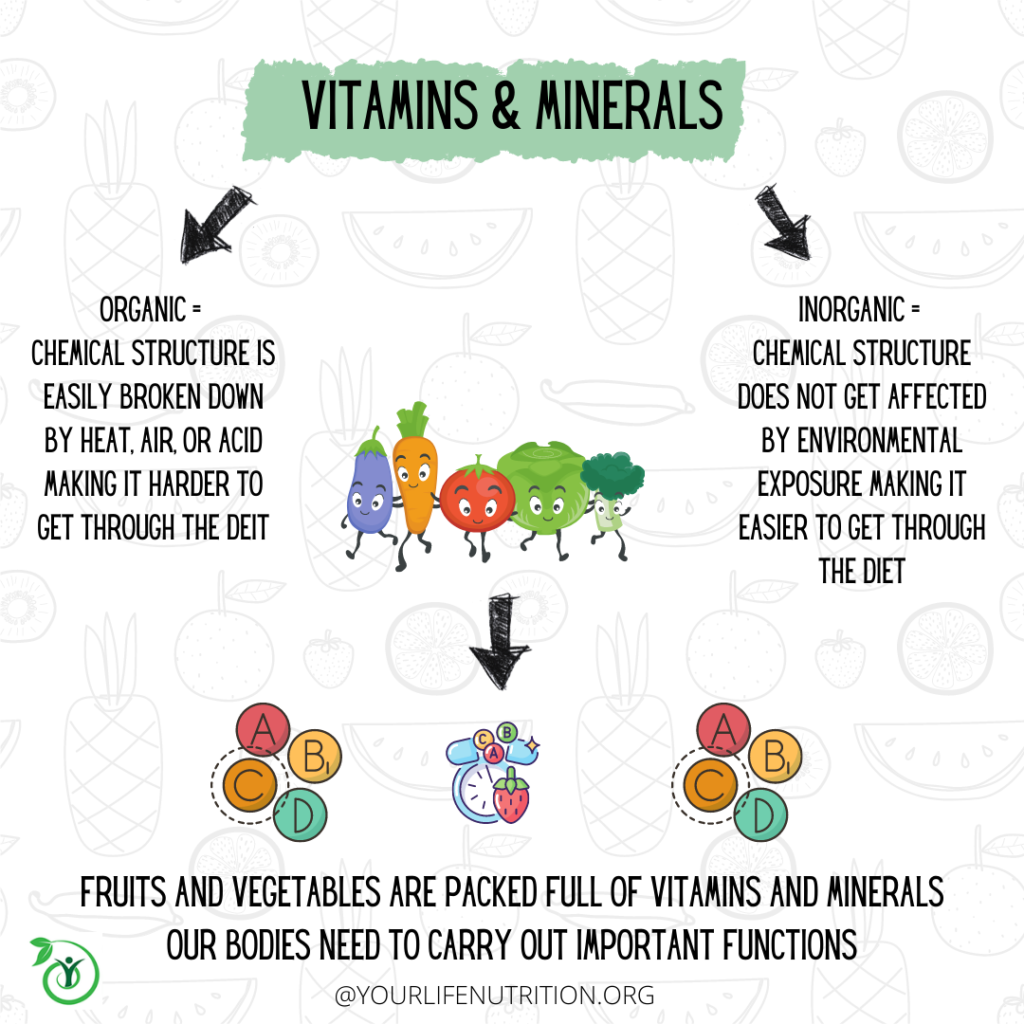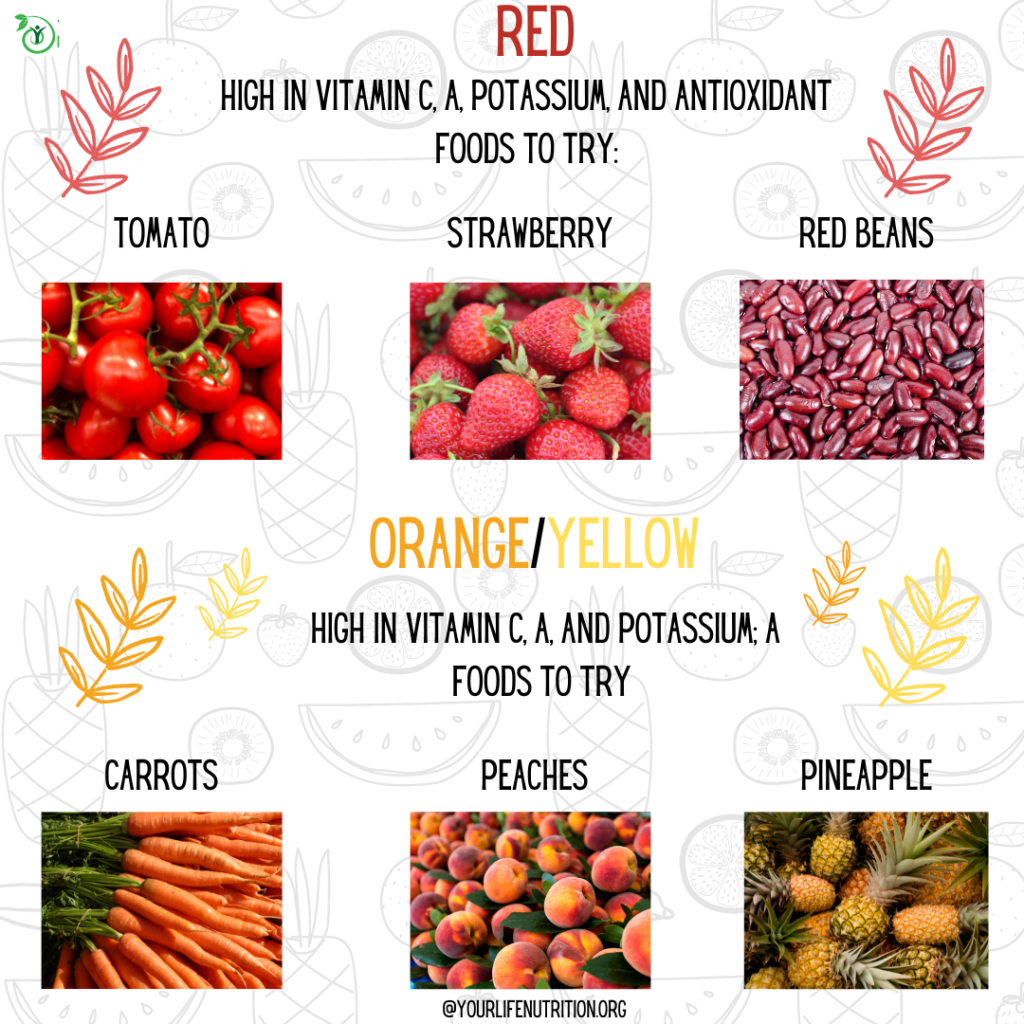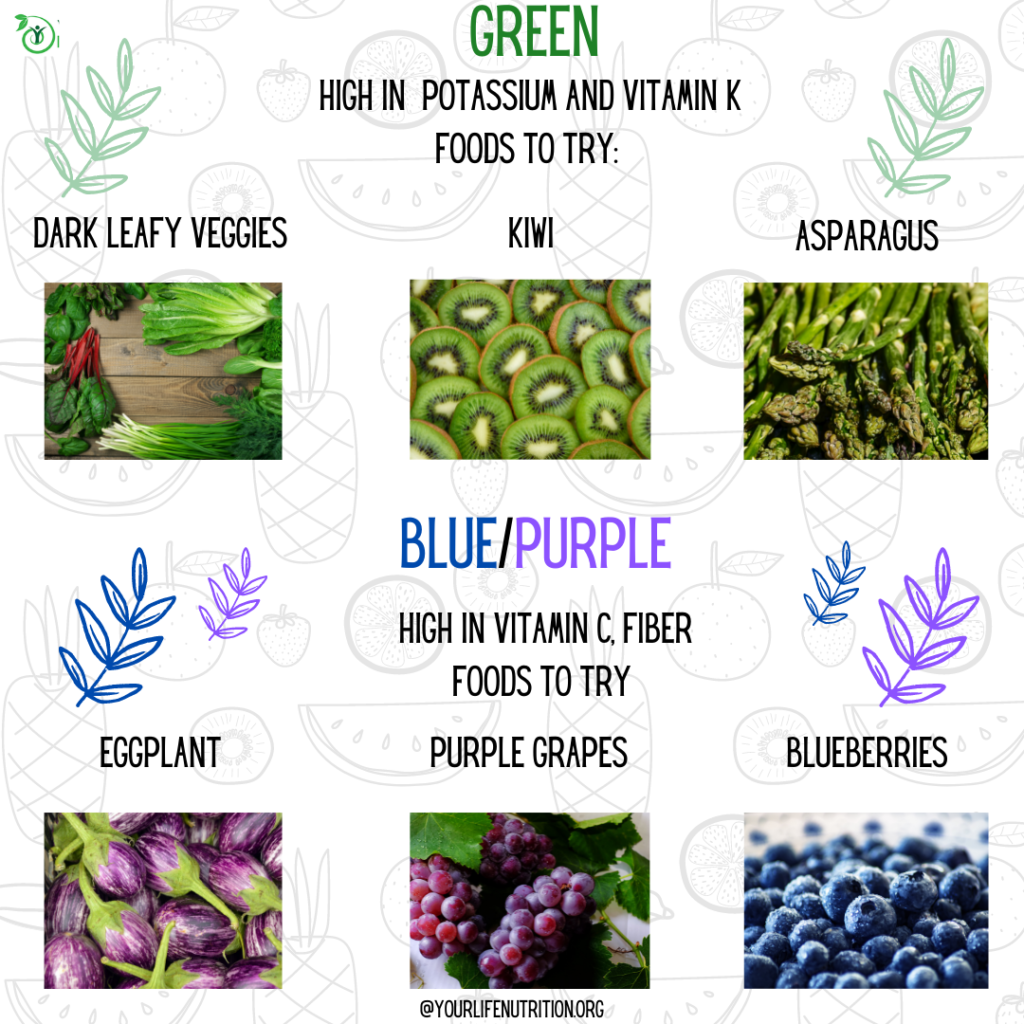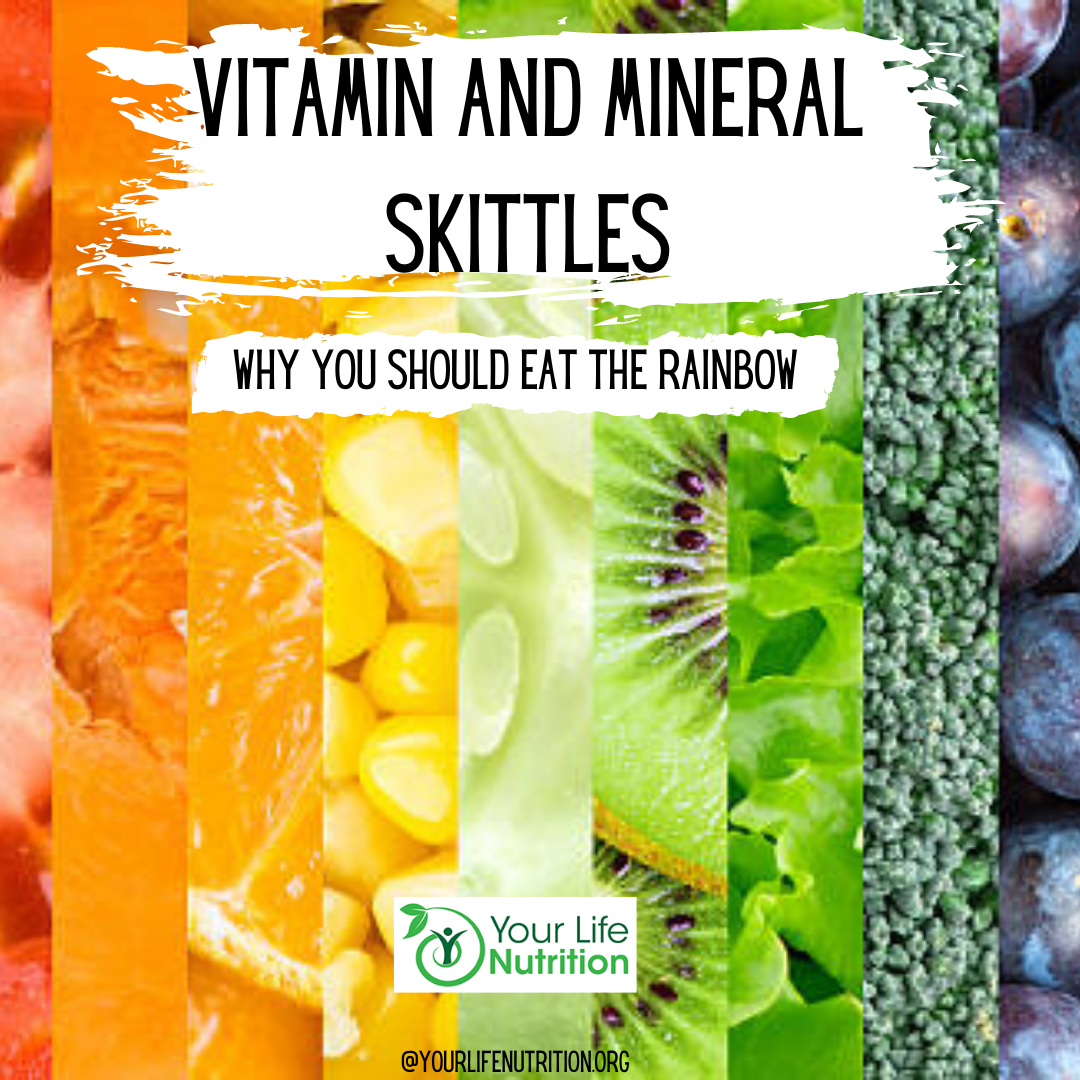Have you ever heard the phrase, “Eat the rainbow”? And no, we aren’t talking about actual skittles! You may have heard a health professional like a dietitian say something along the lines of, “try to fill your plate with loads of colors”, but why is that? Well, different colored fruits and vegetables have a unique makeup of vitamins and minerals.

There are 30 vitamins, minerals, and dietary components necessary to carry out body functions.1 Many of these our bodies can produce, however there are also some it cannot so we must consume them in the diet.1 But, why do we need vitamins and minerals in the first place? These nutrients are key players in the body and aid in the production of skin, muscle, bone, sending nerve signals, making red blood cells, healing wounds, boosting the immune system, converting food into energy, repairing cellular damage, and delivering nutrients and oxygen to other organs, to name a few.1
Now, you may have heard vitamins and minerals talked about together as if they were the same nutrient, however there are some differences to note. First, vitamins are organic substances, meaning they are susceptible to being broken down by heat, air, or acid.1 Minerals are inorganic, so their chemical structure does not get affected by environmental or outside exposure.1 Because of this, minerals are easier to get in the diet as vitamins are often degraded in the process of cooking, storage, and air exposure.1

Now, you may be wondering how to get adequate amounts of all the vitamins and minerals our body needs. This is where eating the rainbow becomes important. The different colors are due to the various phytochemicals within the food.2 So, what exactly is a phytochemical? This is a natural bioactive compound rich in different vitamins, minerals, fibers, and antioxidants, thus giving us various colors like for example, green, yellow, and red bell peppers all of which are diverse and unique in nutrient composition.2

Let’s do a quick overview of the different colors and what their phytochemicals provide:

Red: high in vitamin C, A, potassium, and antioxidants.2
Foods to try: tomatoes, strawberries, and red beans.2
Yellow/Orange: high in vitamin C, A, and potassium; additional health benefits include boosted immunity and eye health.2
Foods to try: carrots, peaches, squash, and pineapple.2

Green: high in potassium and vitamin K; additional health benefits include heart-health, improved blood clotting, vision, bone, teeth, and antioxidants.2
Foods to try: dark, leafy greens, asparagus, green bell peppers, kiwi, and honeydew.2
Blue/Purple: Vitamin C, fiber; additional health benefits include boosted urinary tract health, memory, and healthy aging.2
Foods to include: cranberries, blueberries, purple grapes, purple asparagus, raisins, and eggplant.2

White/Pale: improve heart health and cholesterol.2
Foods to try: banana, mushroom, onion.2
These vitamins are buckled into these foods and our bodies must digest and absorb a piece or fruit or vegetable to be used for the body’s essential processes.1 Something to keep in mind is that not all vitamins are digested in the same way. Vitamins are either water soluble or fat soluble.1 The water soluble vitamins include B vitamins and vitamin C and are found, not surprisingly, in the water content of the foods containing them.1 Once we eat and digest the food, water soluble vitamins are directly absorbed into the bloodstream to be converted into their active form for use in the body.1 If we have too much a supply than is needed, the kidneys flush out excess vitamins through the urine.1 As mentioned earlier, water soluble vitamins play important roles in the body, but one of the biggest roles they assist in is freeing the energy from the food you eat so it can also be used.1 Additionally, tissue health is heavily influenced by these vitamins.1
Since these vitamins are regulated by the kidneys, one may assume there is no harm in consuming more water soluble vitamins than the body needs, however this is not always the case.1 Vitamin C, B12, and folic acid can be stored for several days and may cause adverse effects if too much is circulating or being stored in the body.1 High doses of B6 can also be a concern and cause nerve damage, numbness, and muscle weakness when upper limits are consumed.1
Fat-soluble vitamins include A, D, E, K, and are absorbed through lymph channels prior to entry in the bloodstream.1 When we eat fat-soluble vitamins, our stomach acid breaks food down exposing them to bile made from the liver which will break them down and absorb them through the wall of the small intestine.1 From there, fat-soluble vitamins enter into the lymph vessels and eventually gain entry to the bloodstream.1 Oftentimes, their travel through the body is as a carrier to a protein (kind of like hitch-hiking) and the excess gets stored in the liver and fat tissue for future needs.1
Now, the minerals we get from these foods also contribute to important body functions like bone, skin, and immune health as well as oxygen transport through the blood.1 Minerals are also classified as either major, meaning they are present in greater amounts, and trace, meaning fewer are present in the body when comparing them to major.1 Major minerals include calcium, chloride, magnesium, phosphorus, potassium, sodium, and sulfur.1 Trace minerals include chromium, copper, fluoride, iodine, iron, manganese, selenium, and zinc.1
Deficiencies of minerals are typically caused by excessive consumption of one mineral reducing the absorption and utilization of another rather than a lack of the mineral in the diet.1 One example is sodium and calcium.1 When too much sodium is consumed, the calcium binds to it to assist in its excretion and in doing so greatly reduces calcium stores.1 Another example is phosphorus restricting magnesium absorption in a similar way.1
Oftentimes, individuals feel they need to supplement vitamins and minerals in their diet, but this is not always the case. We can get all of the vitamins and nutrients we need from the foods we eat by eating a well-balanced diet with loads of our favorite fruits and veggies. It is pretty difficult to eat too many veggies, but it’s not very hard to get too many vitamins and minerals from a supplement. If you feel that you are not getting enough of a certain vitamin or mineral, try to find the foods they are found in to keep yourself at a healthy level. If you are not able to get a vitamin or mineral through food and do need a supplement, make sure to check in with your physician or a dietitian to make sure you are not getting too much since this can cause some negative side effects. The easiest way to get all the vitamins and minerals your body needs without having too much is to, you guessed it, eat the rainbow.
References:
- Helpguidewp. Vitamins and minerals. HelpGuide.org. https://www.helpguide.org/harvard/vitamins-and-minerals.htm. Published December 23, 2021. Accessed January 20, 2022.
- Eat a colorful diet. Rush System. https://www.rush.edu/news/eat-colorful-diet. Accessed January 20, 2022.
Post created by Your Life Nutrition Intern from the University of Akron: Michaela Campbell





